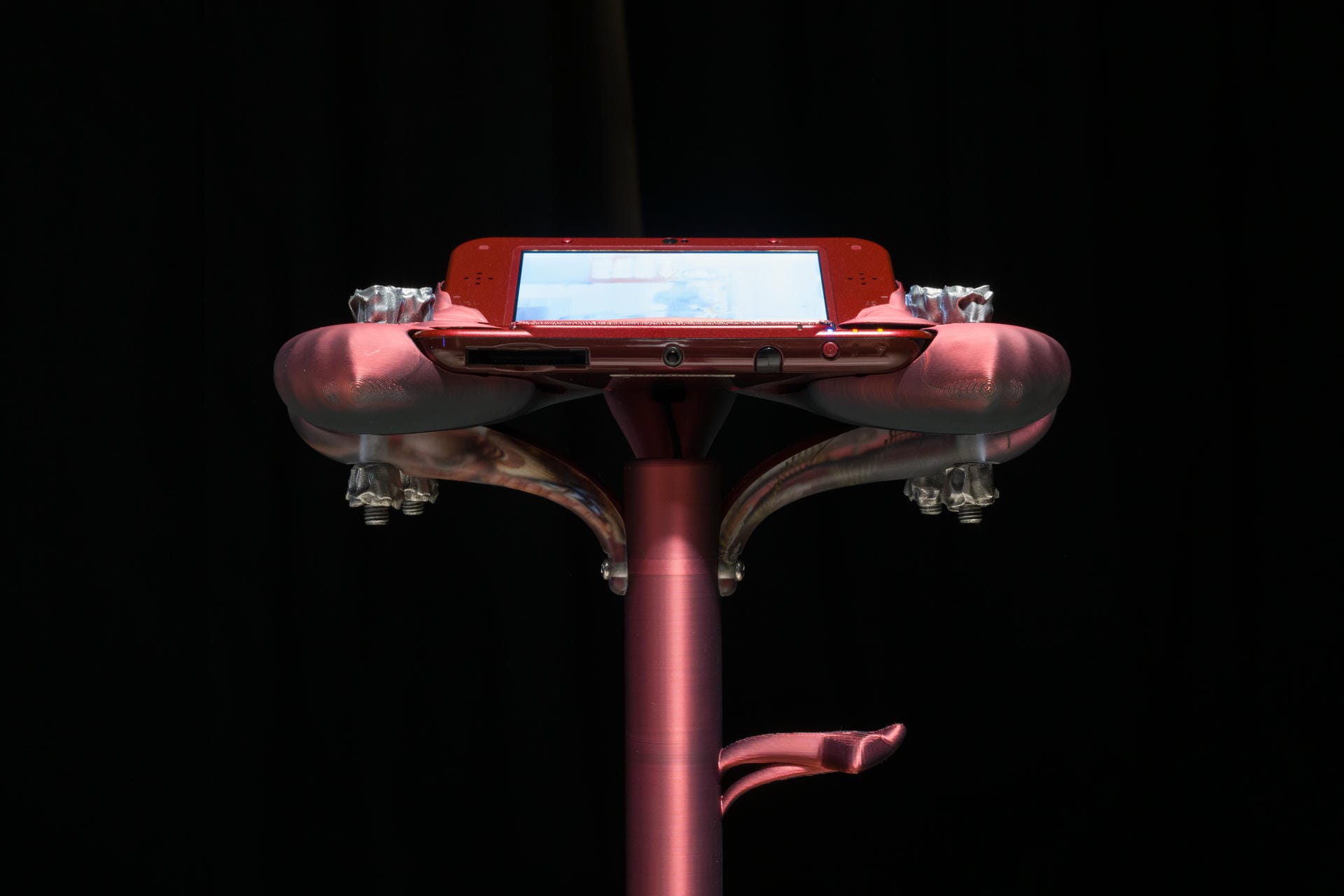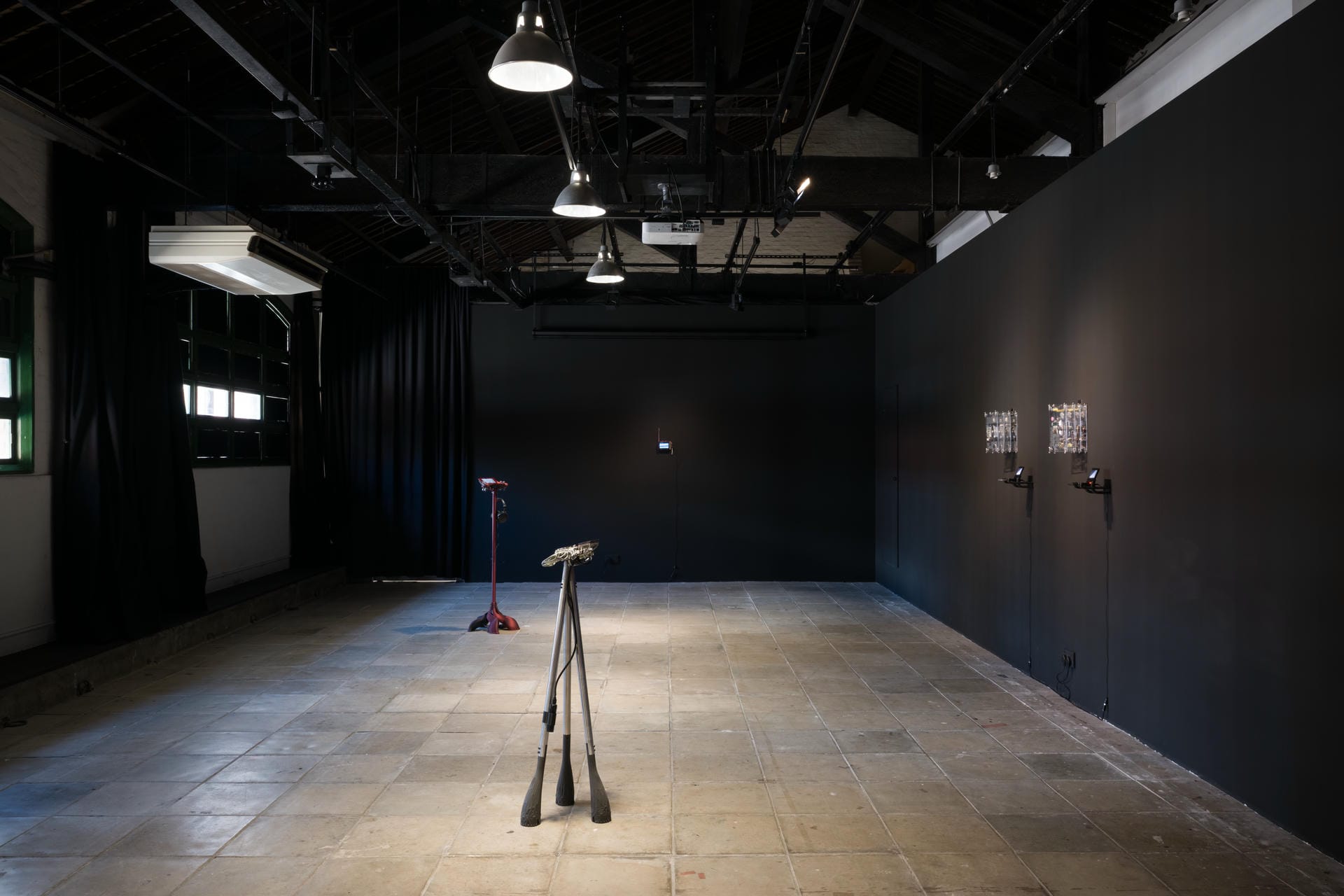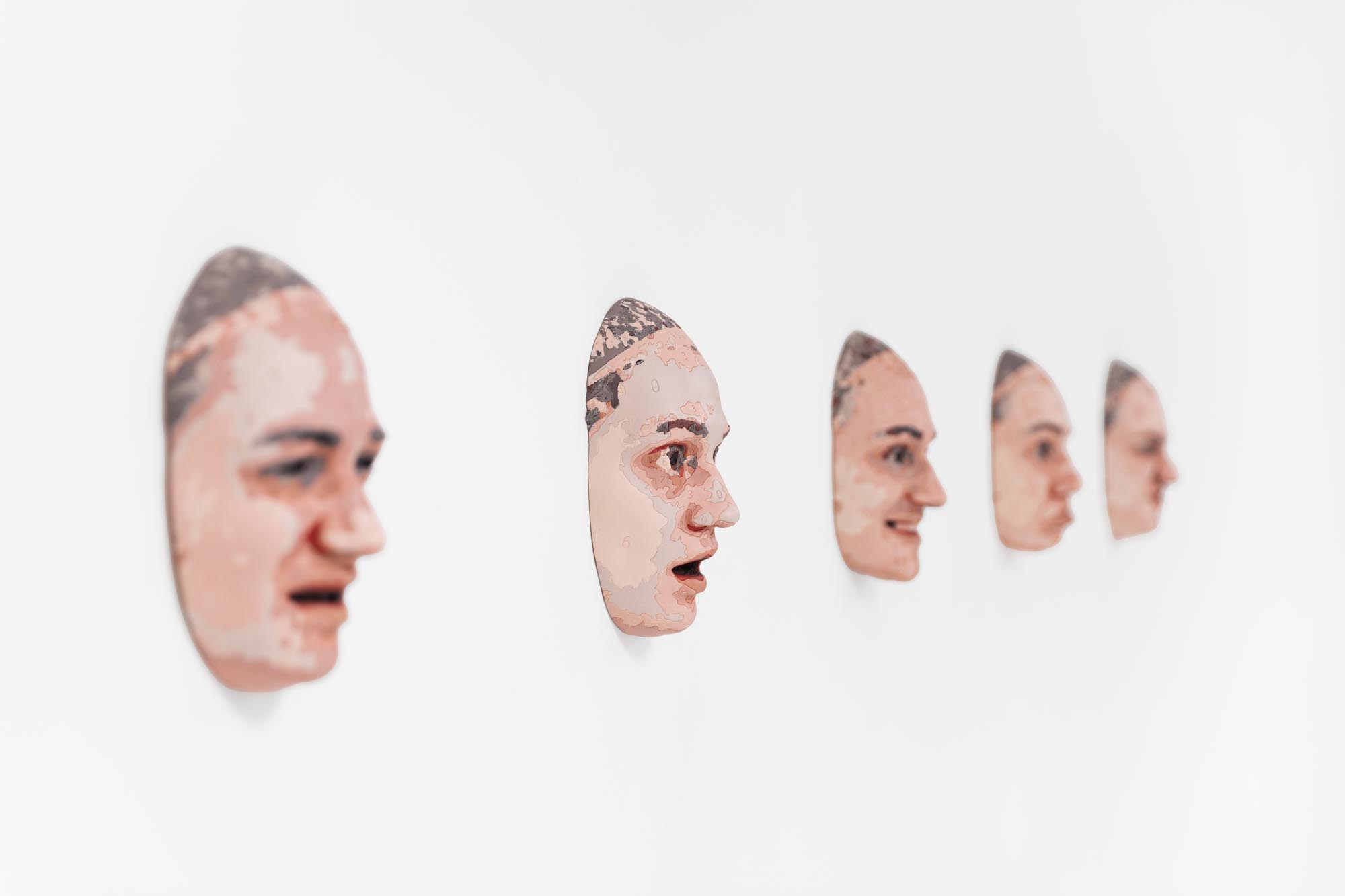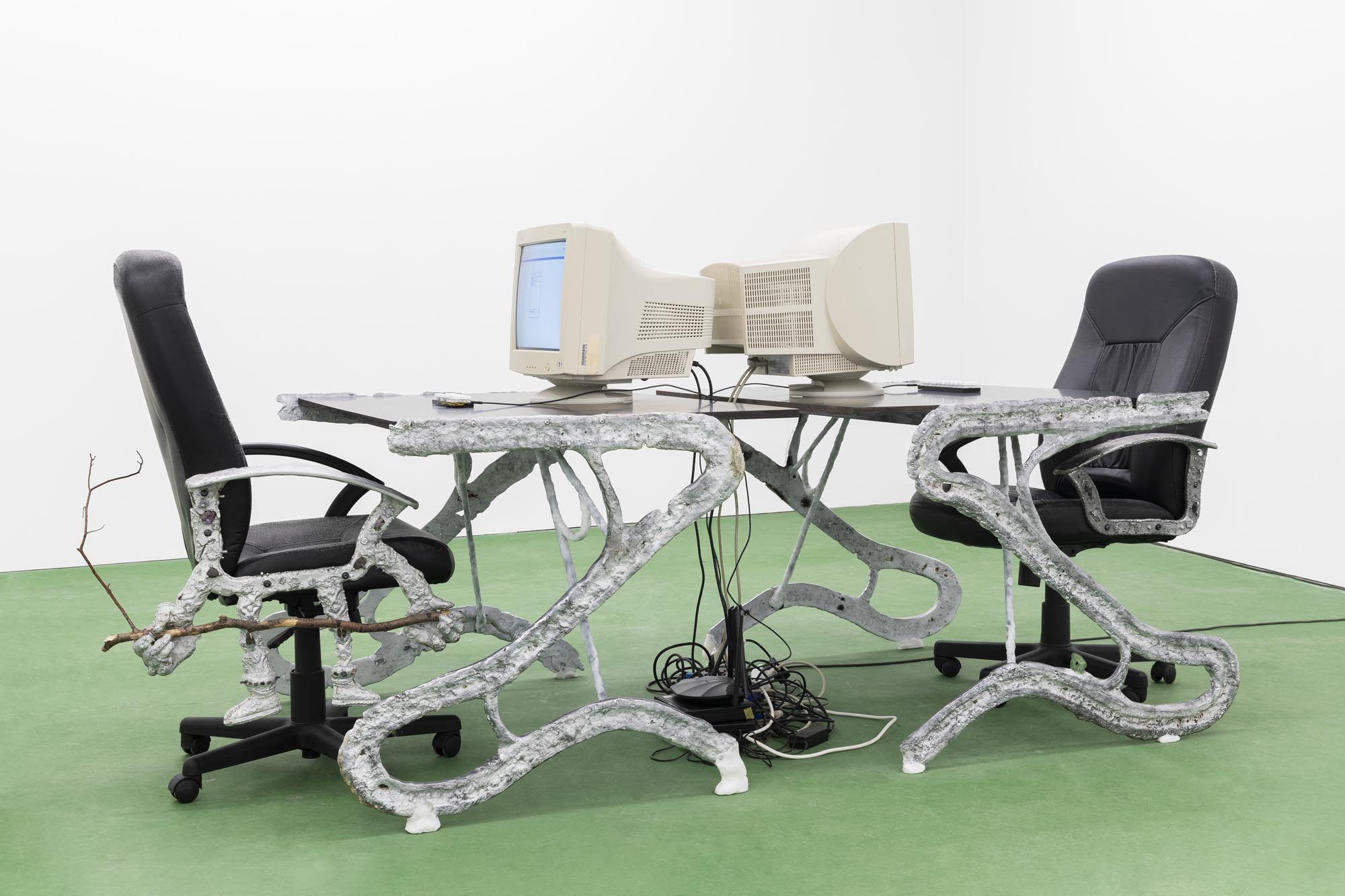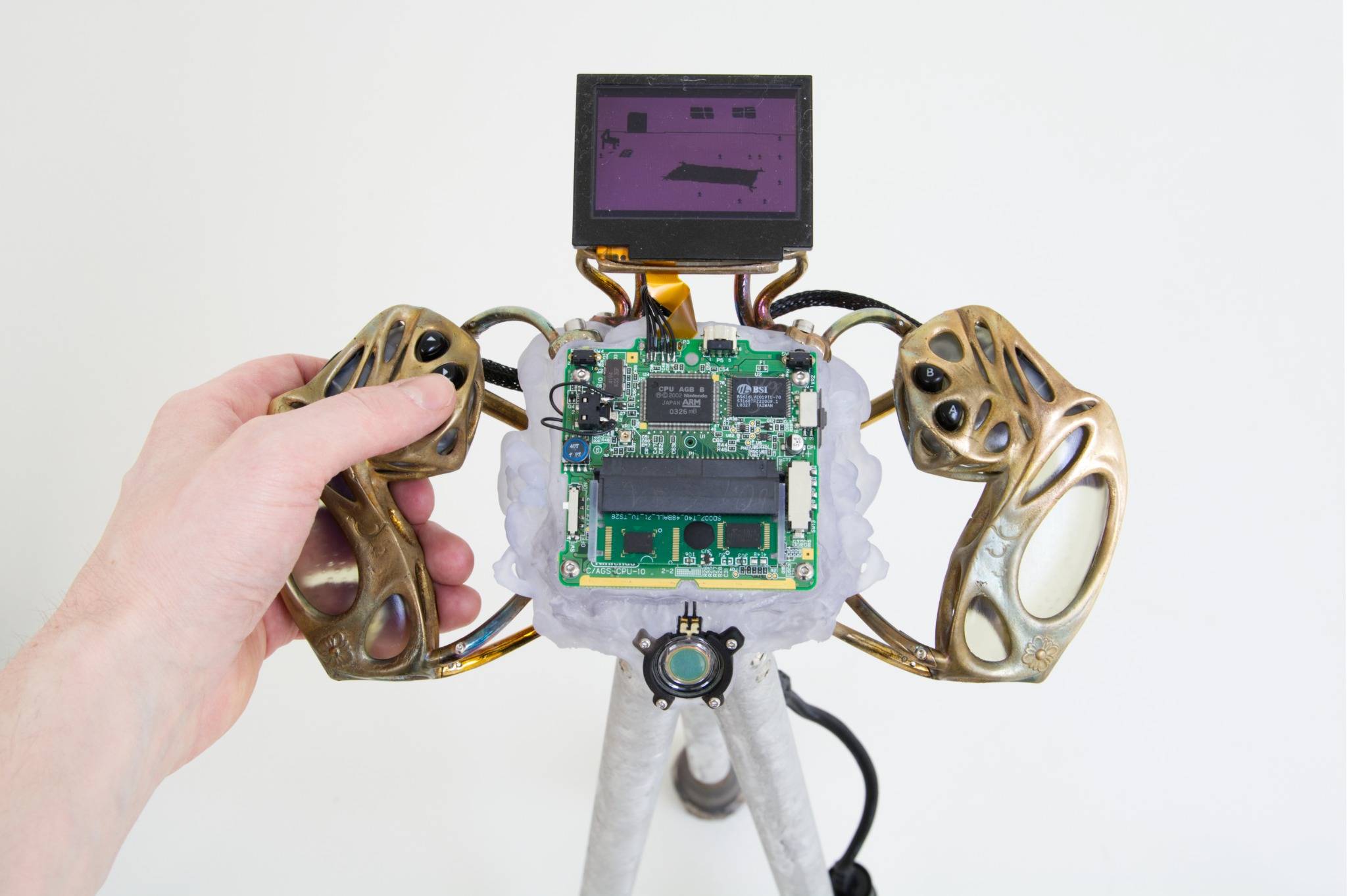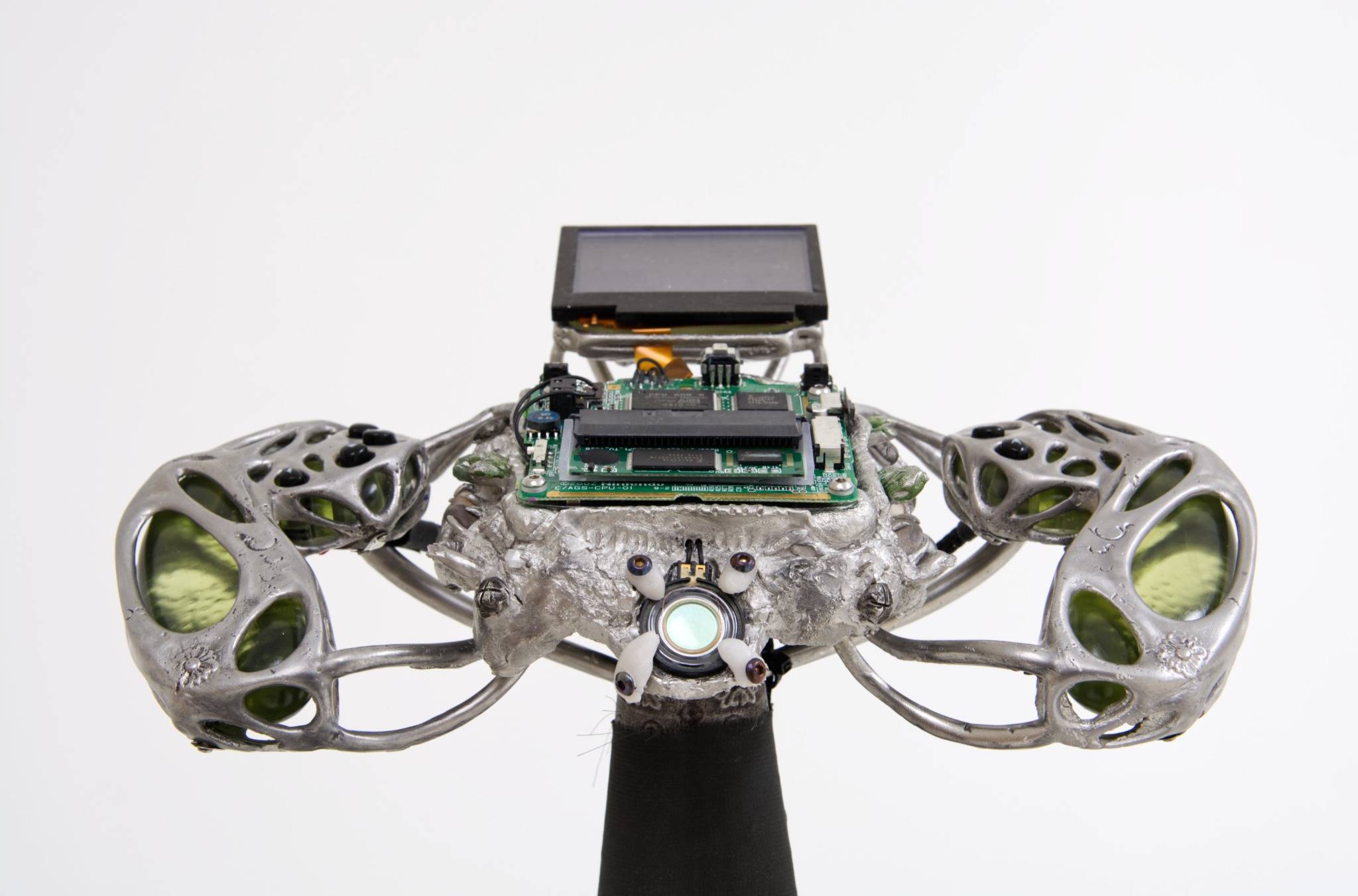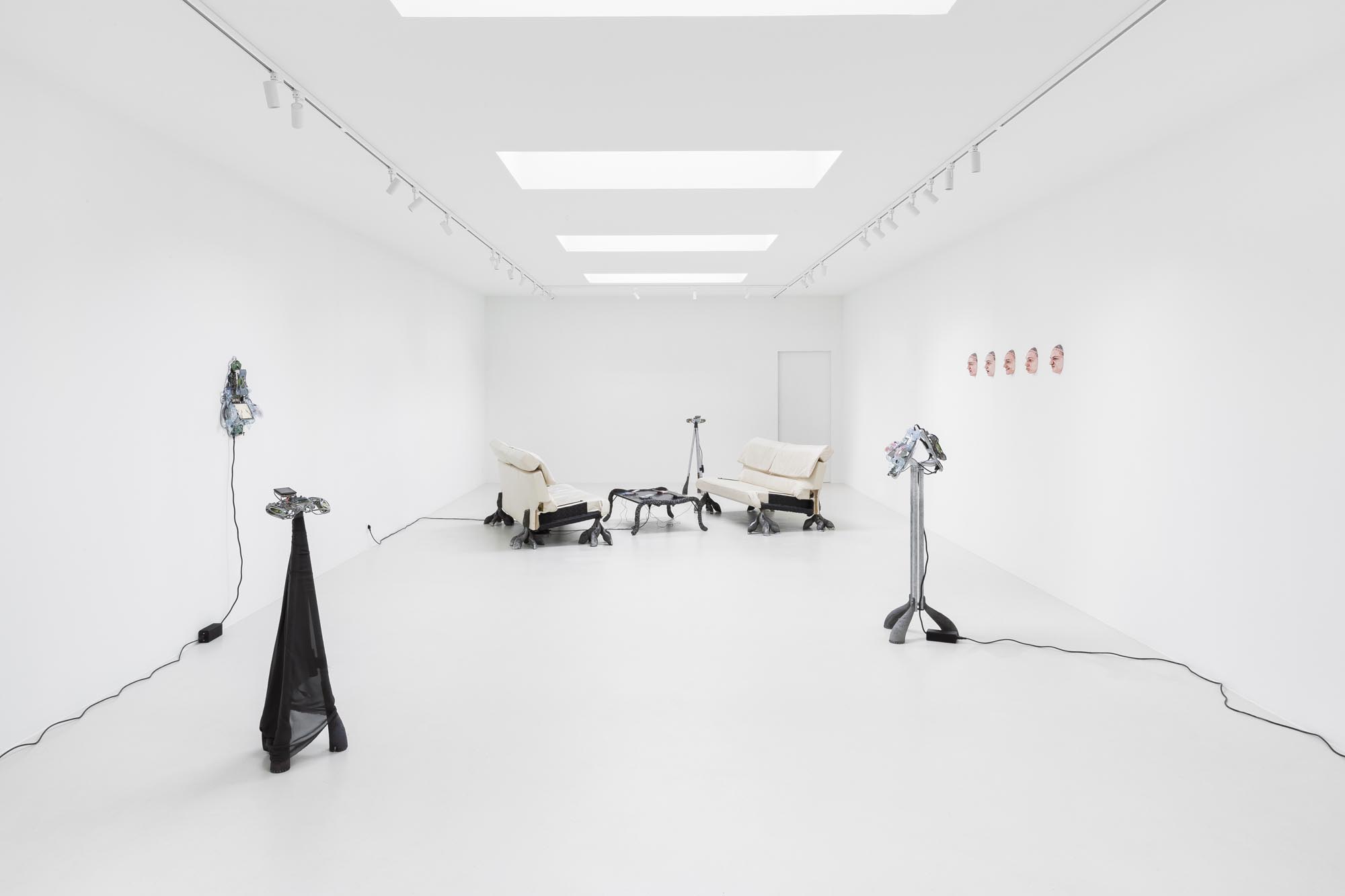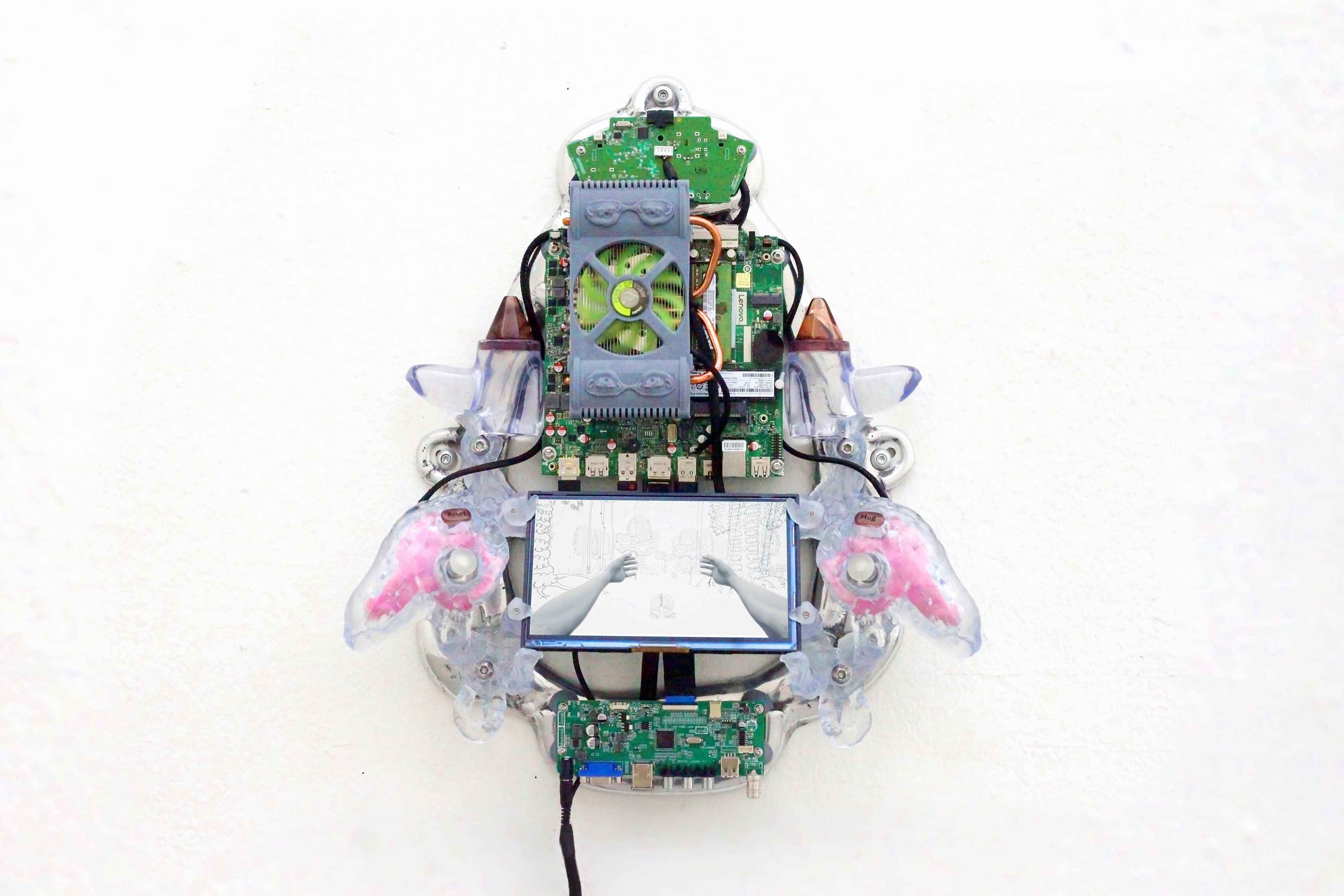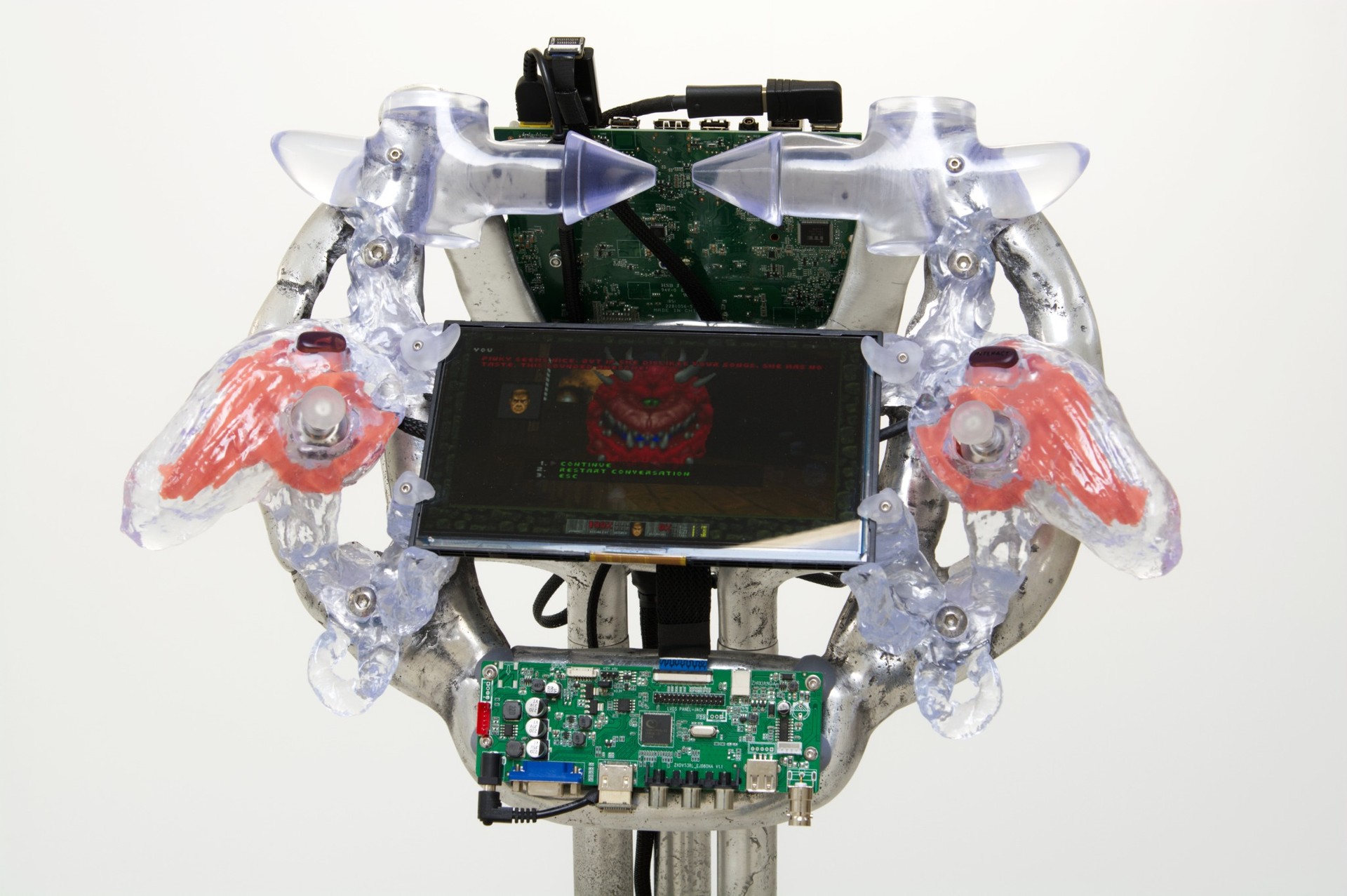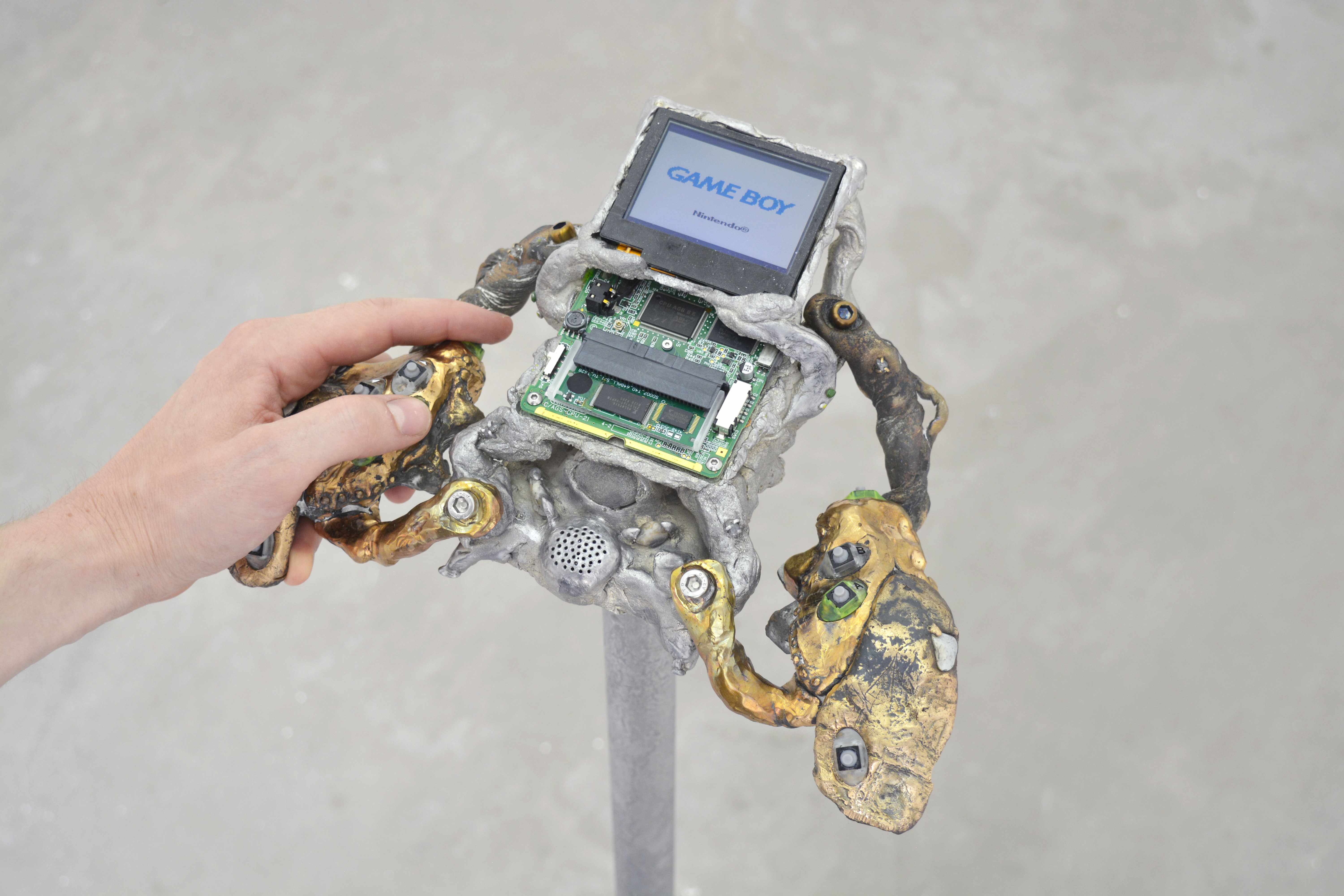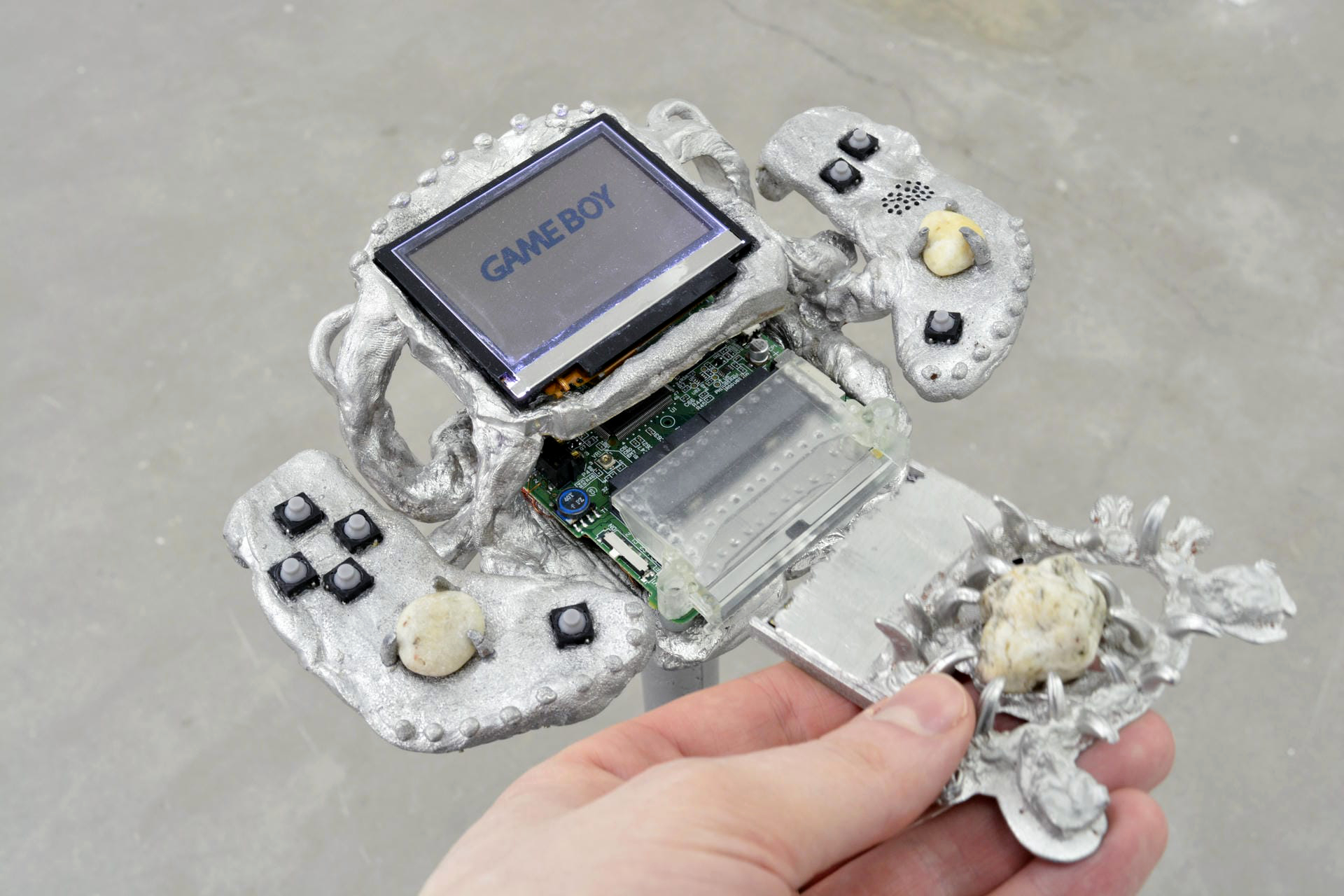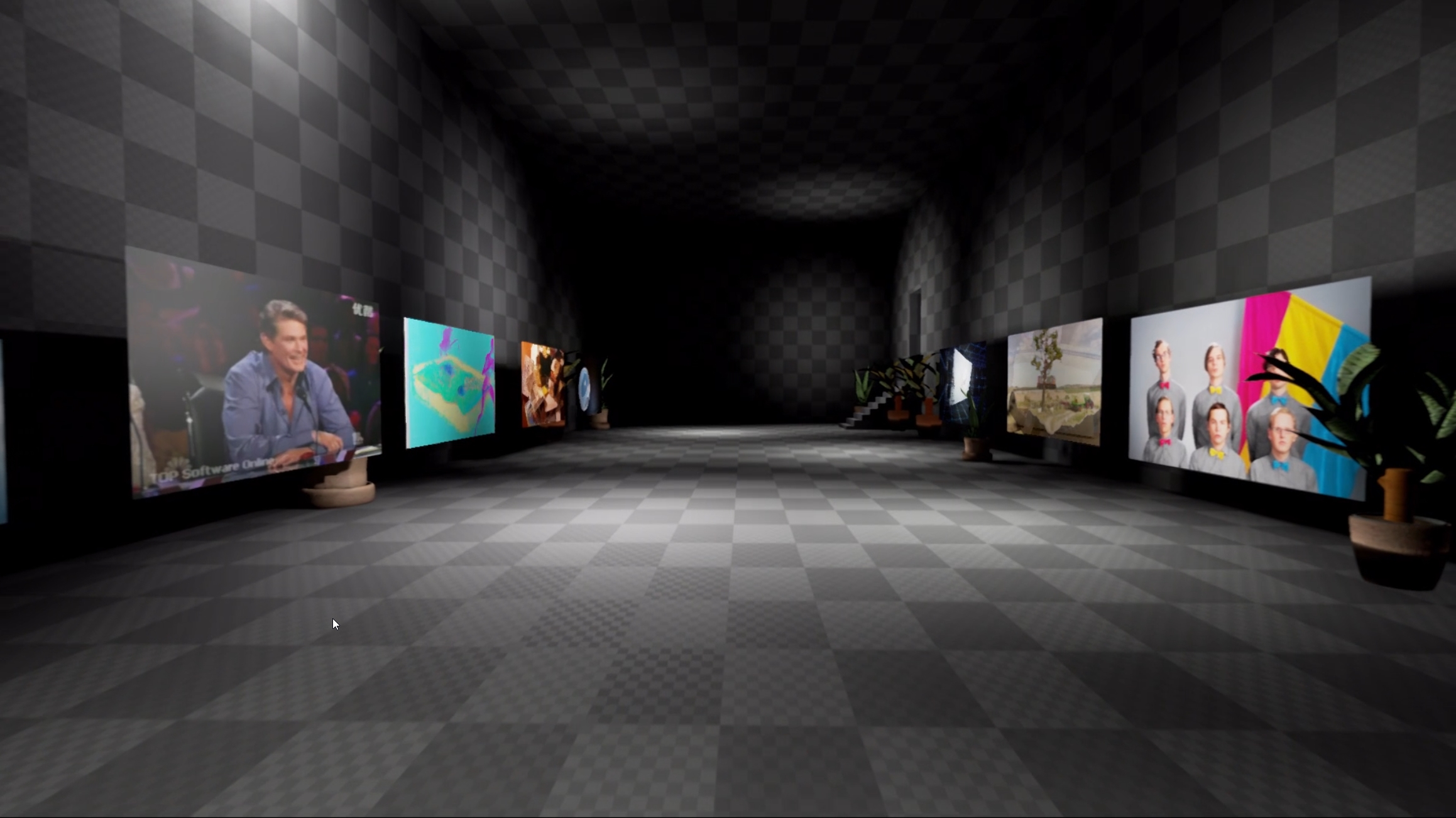A Tree Full of SplintersSolo show at Everday Gallery in Antwerp Colaboration with Moreno Schweikle as Schimmel & Schweikle
Rooted in material theory, Schimmel and Schweikle’s new series of works examines wood and its relationship to human progress, taking a close look at how it’s historical, cultural and political narratives have shaped the way we think of design for centuries. Exploring the space between 3D modelling and craft, they examine the hierarchies between the hand made and the digitally manipulated. Simulated wooden ornaments assume a contiguous relational form to the texture they are mimicking, indistinguishable from the original, except for the thin lines that give away its 3D printed manufacturing. Wooden shelving in the shape of a branch, so perfectly tree-like that it replicates itself; the branches organic bulges repeated as if it were a block print. The pieces invite us to reconsider which form would qualify as ‘more real’, an algorithmic search engine might decide on the 3D printed branches, as the articulation of physical properties that are attributed to wood are so impeccably pronounced in this digitally produced form. Baudrillard predicted that the simulation will become realer than the real, yet in the work of Schimmel and Schweikle they remain equals, assisting each other in function and form.
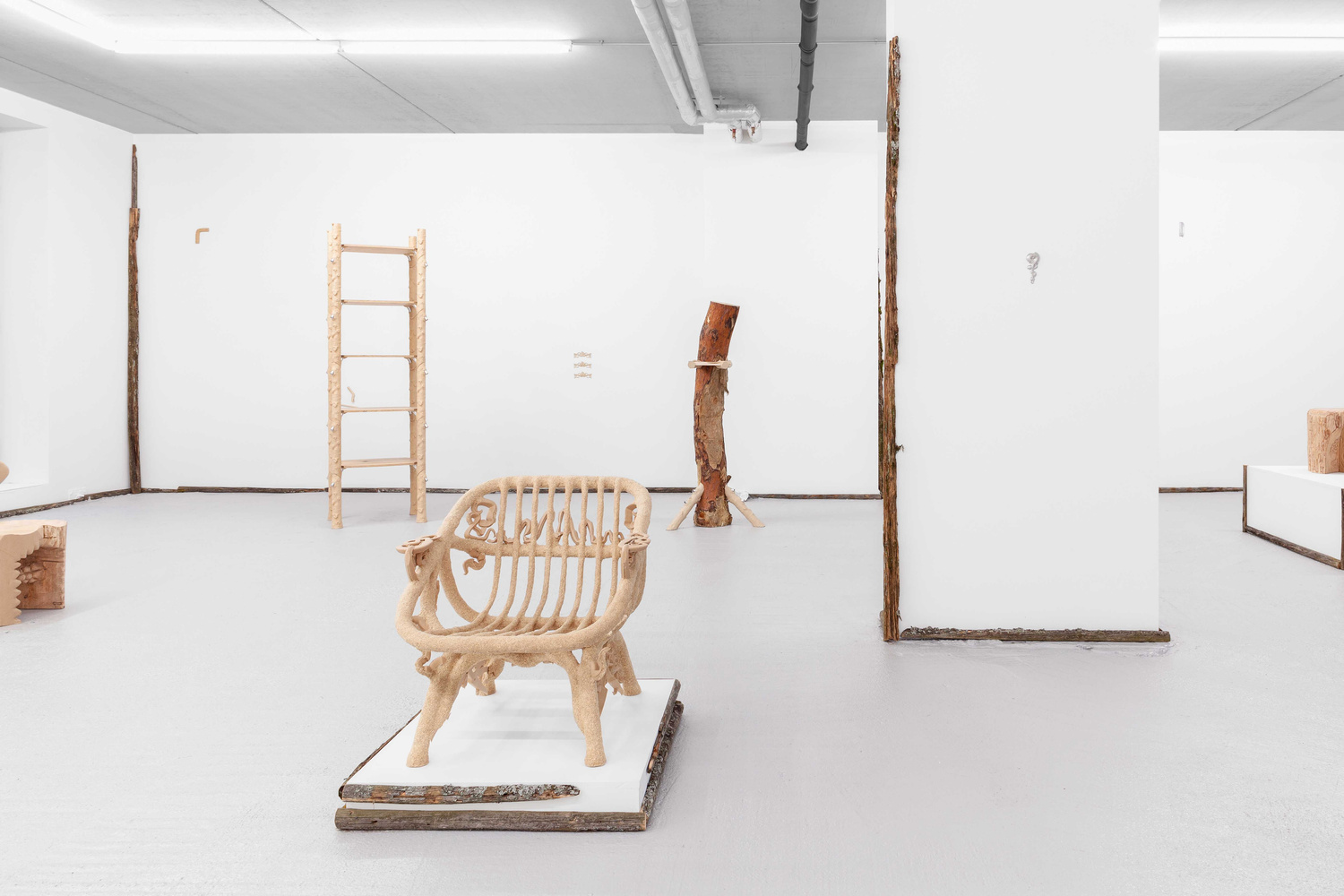


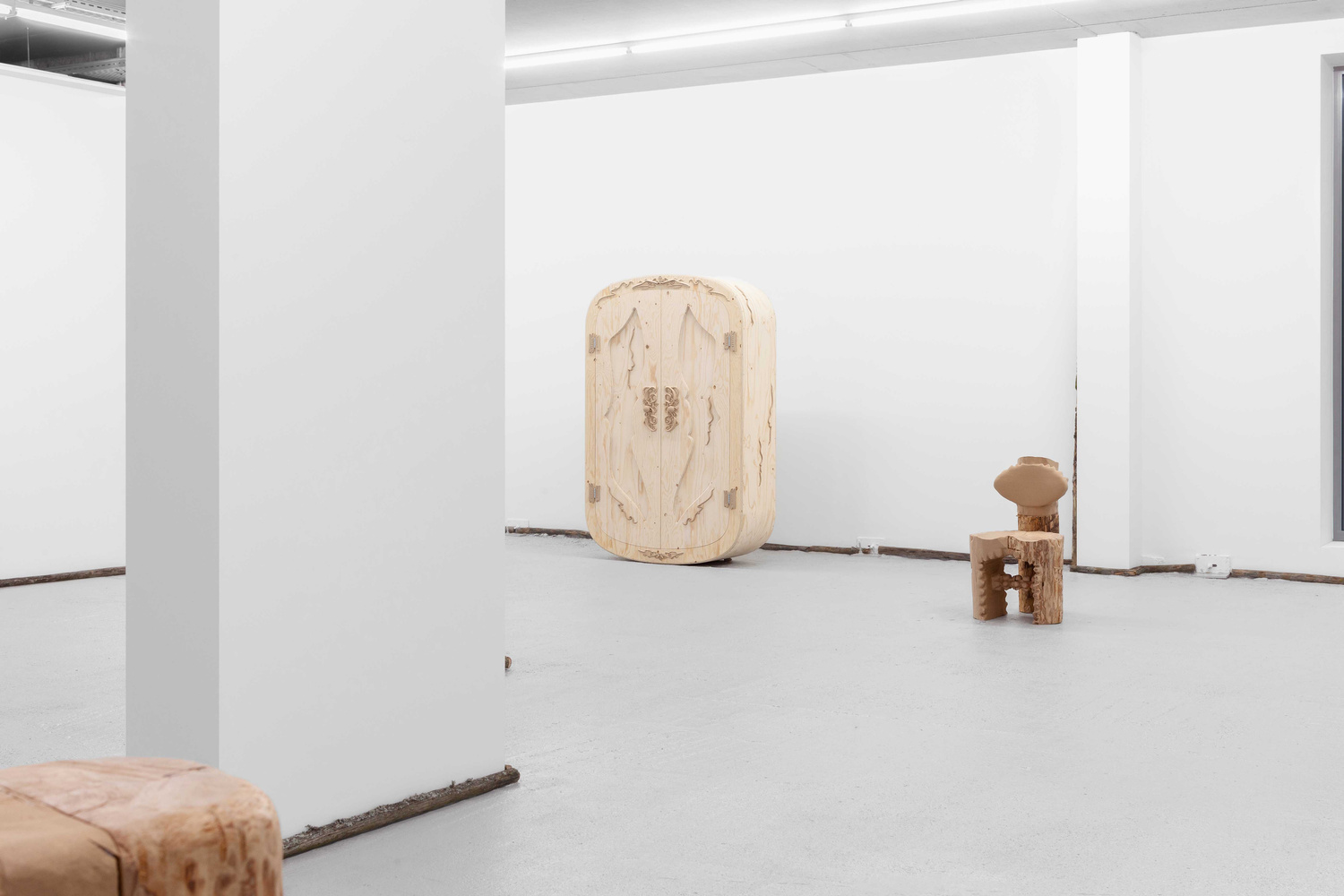
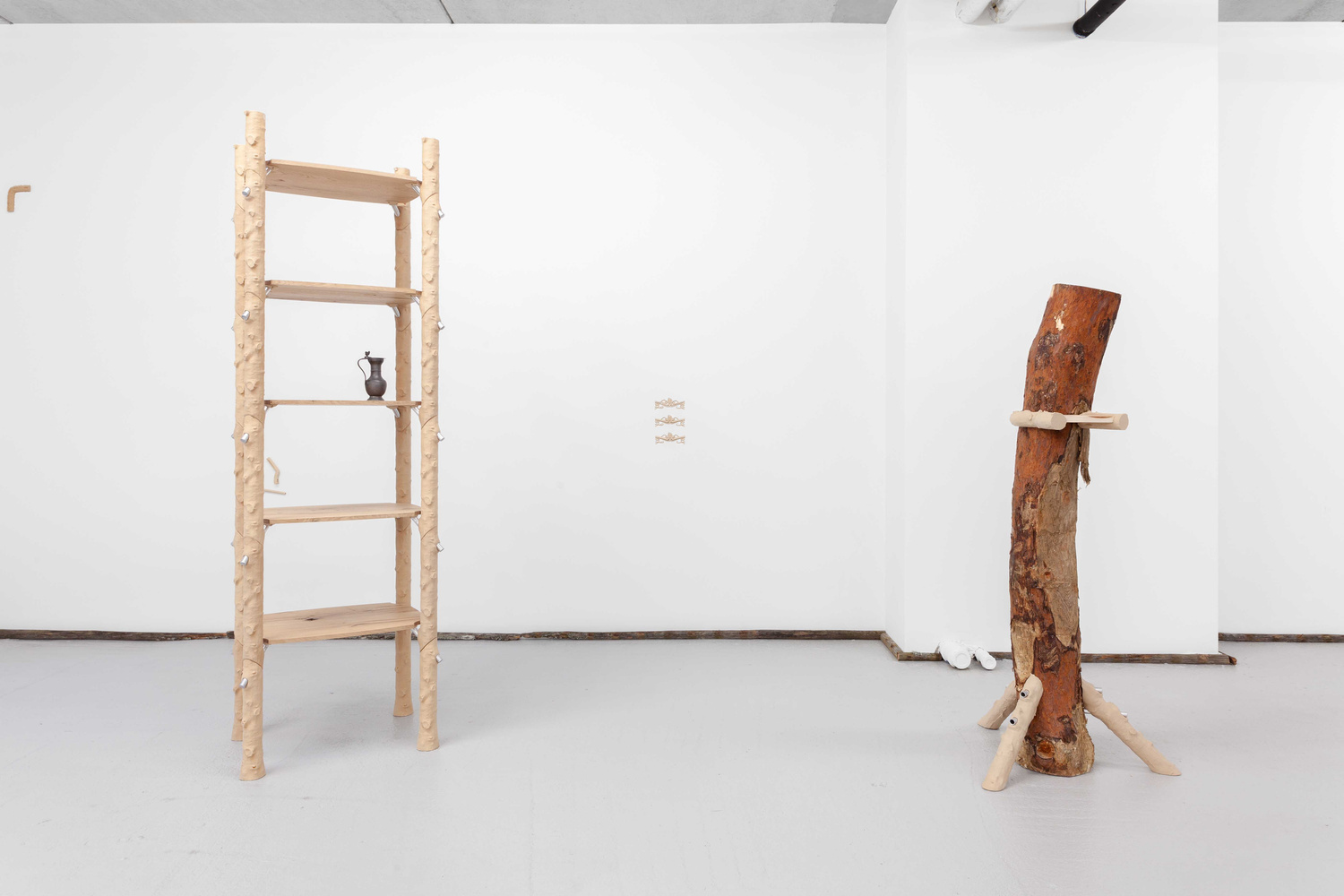




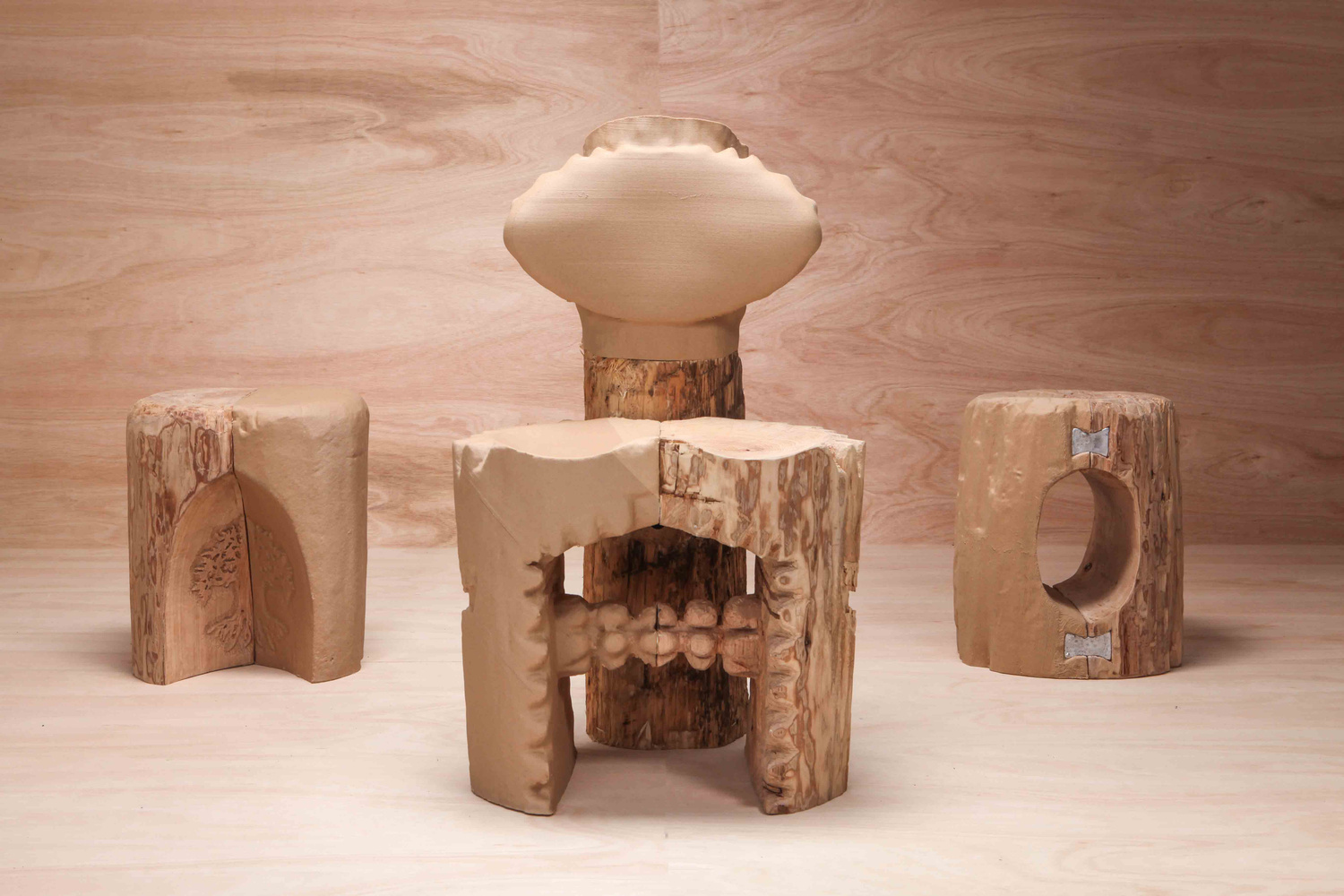







Why did you choose to work with wood for this new series of works, as a material but also as a concept?
S&S: Throughout the research for our projects we started to see that in the 3D printer world more and more different types of material filaments started to appear, amongst them a wood filament. That triggered us to think about what it is that defines ‘real wood’, considering all the different processing stages that wood undergoes to become a usable building material for mankind. By different stages we mean how the most untouched wood trunk is processed to become planks, beams, at some point a veneer, sandwich material (Plywood) and eventually is being shredded into wood fibres that become another material like MDF. If for instance MDF, which is made out of wood fibre and a binder, is considered wood then would a wood 3D printing filament, which is also made of wood fibre combined with a binder, be considered real wood as well? We saw that mankind always kept on altering wood to their need, depending on the disposal of tools and circumstances. We are fascinated by the development of digital material culture and how this connects to current cultural shifts/aesthetics.
It is really interesting how you combine the most traditional techniques with the most contemporary ones, could you expand on this conceptual decision?
S&S: The tradition of woodworking opens up possibilities when applied to the digital realm, where construction is not limited to the physical properties of a material. Wood is also interesting to us because of it’s various possibilities of being altered. We think that every stage of wood (natural trunk, plank, sawdust) has it’s own inherent qualities and so do the new 3D printing techniques. We tried to consider and apply all these stages and see how they can speak to each other functionally and aesthetically. For the Echo stools for instance, we hand chiseled the first part of the stool out of tree trunks that we foraged in the woods. By only making one half of the stool we created a need for another half. The other half was made by 3D scanning the first half, digitally mirroring it and then 3D printing it. The second half is in a way the digital echo of the first half and in a very literal sense opposes two different views upon woodworking.
Where does the ‘decorative’ come into your work?
S&S: The level of detail or perfection of a wooden object historically has been seen as a sign of the skill of the woodworker. With the help of the computer and 3D printer that level of control over shape and surface can be obtained by us who do not possess the skill and experience of a traditional wood worker. Ornaments function as a testimony of the hours of time invested and level of skill that can be achieved by the maker. Considering that in history there was a lot more time given to the craftsman, we find ornaments especially interesting as signifiers of the sensibility of the era in which they were conceived. Ornaments play a role specifically in the Wood-blend cabinet in this series. The main body of this piece is constructed from plywood (which constitutes different layers of wood glued together). A type of wood that is usually used because of it’s strength and applied for internal construction to be covered by materials that are seen as more valuable. We chose to not cover the construction but leave the plywood visible, to give equal value to every type and form of wood. Attached to the constructed body are 3D printed ornaments that we made with 3D modelling software. These ornaments reference baroque ornamentation and its affinity for organic shapes such as branch structures and acorns. In other pieces, such as the Goo lounge chair, the previously futile decorative ornaments gain a structural importance and add to the actual functionality of the object. Digital toolkits offer us the possibility to easily modify the shape of the ornaments. By combining this method with real life wood working the pieces have a certain inter temporality that you couldn't achieve by only using modelling software or hand craft.
Do you distinguish between digital and analogue production methods?
S&S: Rather than trying to distinguish between these production methods we are fascinated about their similarities and how they can relate to each other. Both the digital and physical production methods have a specific set of tools that are inherent to the technique respectively. We are interested in making an object that uses both production methods and embraces both qualities. Digitally produced objects are often perceived as characterless and inauthentic. We are critical of this notion as we see how much craft is involved in digitally made work. Maybe that is also a reason why we gravitated towards wood, being a natural and organic material. By mimicking the liveliness of this natural material with a very mechanic tool like 3D printing, the objects become more ambiguous and therefore provide the opportunity for both aspects to be considered. We see our way of working with wood as a continuation in the tradition of the woodworking craft; the invention of tools always excelled the development of a craft. In this sense we don’t see the digital and analogue production methods as opposites.
Introduction and interview by Tenant of Culture
https://everydaygallery.art/
